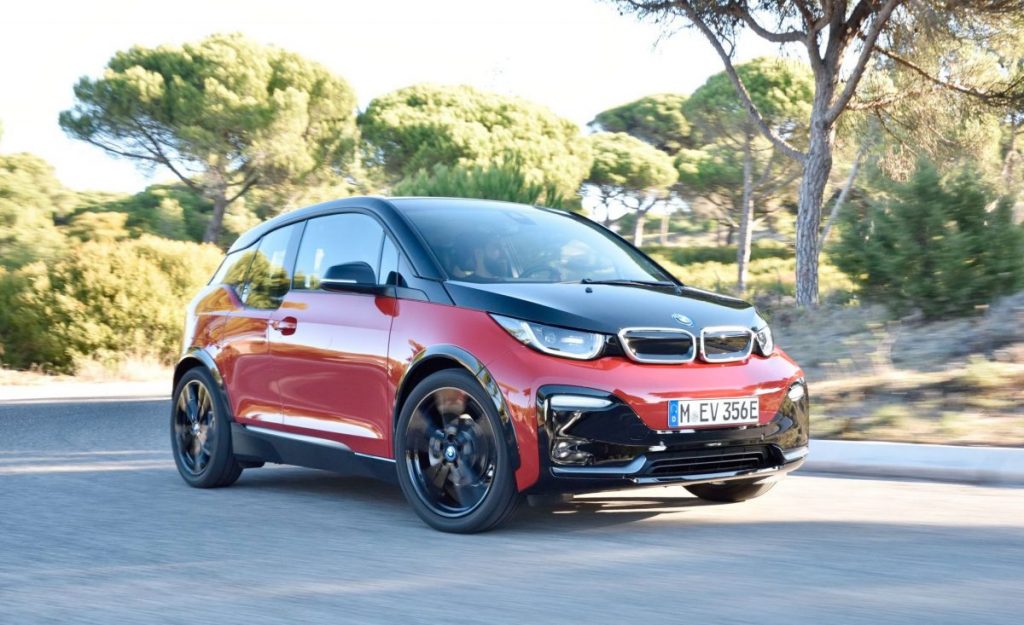In 2017, for the first time, new EV sales passed one million units globally. What is more spectacular is that they are expected to exceed two million by the end of this year. By 2020, EV producers could double that number and reach 4.5 million. According to McKinsey, these numbers represent about 5 percent of the global light-vehicle market and are expected to reach nearly 35 percent by 2030.
This means that in less than 15 years from now, every third car you see on the road will be an electric vehicle. How did this come to be?
The rise of the electric vehicle
What started as a niche eco-friendly trend is now taking over the automobile market. Once, electric vehicles might have been a fancy luxury to have. But today, they are a serious proposition for motorists. Driving an EV is no longer a trend among the healthy living environmentally-friendly drivers. It’s a common tendency among people all over the world, especially in China.
In 2017, the Chinese market grew by 72 percent over 2016, partly driven by national and local subsidies. China now has a larger EV market than Europe and the United States combined. Europe’s EV market grew by nearly 40 percent in the same period, even though this was from a smaller base. Europe’s EV power came mostly from Germany where EV sales more than doubled.
Some countries provide additional benefits to the corporate sector. Companies that replace their corporate vehicles with green cars get a reduction in corporate car taxes. This is the case in Norway, for example. In the UK, a business could apply for a grant and get up to 35% off the price of the electric car and 20% off the price of an electric van. In addition, a company vehicle can get exemption from fuel duty, vehicle excise duty, van benefit charge or fuel benefit charge.
This growth occurs not solely because of government subsidies and incentives. Automotive companies are now opening their eyes to the importance of EVs and their potential among the consumer base. As EV technology comes of age, manufacturers now prepare to put more battery-driven cars out in the market. There will be more than 350 new, feature-laden EV models to debut by 2025. Here are the ones that have already made the most popular list:
Our favorite EV models
Although the basic function of most cars is pretty much the same, they differ based on the need they need to fulfill. So think why you want a car before you think whether it’s an EV or not. Choosing an electric vehicle is not easier than choosing any other car. You can browse hundreds of models and payment ways now – just like any other car. Yet, it can be a really pleasant experience that makes the world happy, too.
Tesla Model 3

We couldn’t think of omitting Tesla from the list. Not only because it disrupted the automotive market, but because it keeps on disrupting the perceptions of what will come next. With his Master Plan and his controversial persona, Elon Musk created a whole world of excited fans around the brand and its cars that only keeps on expanding.
In 2018, Tesla ranked fourth on Forbes’ list of the World’s Most Innovative Companies. Millward Brown ranked Tesla among the top 100 most valuable brands. So not only do people like the brand, but they really buy its products. And that shows very well in this year’s peak in sales of Tesla Model 3. Solely in August, the company sold 17,800 Model 3 vehicles. Quite shocking, because that’s the highest ever for sales of a single plug-in electric car in any month. In that month, Tesla Model 3 became the 5th best-selling passenger car in the U.S. The Model 3 now stands alone as one atop the sales chart for the year with no other plug-in electric car capable of catching it.
Yes, we know Tesla may be everyone’s favorite EV. And if we take it out of the equation, the world of EVs will not be half as exciting probably. Yet, in the real world, most people still find it hard to afford one. This is good news both for the company and market because there’s plenty of room to grow and plenty of other players to fill the spotlight.
The Nissan Leaf

The leading mass-market electric car. In 2017, the Nissan Leaf was the world’s best-selling car. The 2018 Leaf is a hatchback that seats up to five and is slightly longer, wider, and taller than the first generation model. The Lithium-Ion battery pack has been increased to 40-kWh from 30. The redesigned Leaf can now travel up to 150 miles on a single charge, compared to 107 miles for the previous iteration.
The Nissan Leaf is perfect for families because it has an upgraded safety technology. The car comes with ProPilot Assist, which combines adaptive cruise control and lane centering systems. Within a few years, this software is expected to evolve to add automatic lane changing and parking assistance. The best thing about the Leaf is that with the 2018 update, Nissan has increased the car’s battery range while lowering the price. This is the first time Americans have had access to an electric car with this level of functionality at a price point under $30,000.
BMW i series

The BMW i series is considered BMW’s line of most innovative vehicles. It is quite desirable exactly because it combines luxury and sustainable mobility. You will see the fans of the i-series ranging from eco-conscious drivers to high-speed and luxury lovers.
The i-series are much lighter than other sports cars. This is primarily due to the use of carbon fiber in the passenger cell. Over a quarter of the materials used for the thermoplastic outer parts are either recycled or made from renewable resources. Producing an i3, from first bolts to final inspection, takes 50% less energy and 70% less water. The BMW i3 was the model is the 5th most sold EV car in Europe in March 2018. And! It scores higher on rankings for projected reliability.
Volkswagen e-Up!

Unlike its rivals, the e-Up is a small city car. It doesn’t shout “sustainability” because it only has few modifications from the regular Up model. Yet, Europeans love it because of its compact size. A range of 93 miles on a full charge is a fair chunk less than you’d get in a conventionally powered city car but it’s great for big city life. It is quite fun to drive through corners, thanks to accurate steering that gives reasonable feedback.
The Volkswagen e-up! isn’t cheap. In the UK you can find it at over £19,000 after the £3,500 Government grant is deducted. This is because the company still struggles to find a way to develop EVs at low costs. Yet, if you are in the EU, the size of the vehicle is definitely an advantage. If you are a loyal fan of the brand, it might be worth supporting them in their efforts to join the EV race. The car is great for previous Up owners, who are willing to make the step to switch to EVs.
Shipping your EV
Once you choose the vehicle you want, you need to get it home without a single scratch. Often, EV buyers look across the state lines for their dream EV. Most often in California, of course. The whole idea behind owning an EV is somewhere between “efficiency” and “luxury”, so don’t ruin that image by scratching your car on the way home.
The EV shipping process is much easier than driving across the country. We will be by your side each step of the way. It is good to have an idea about the way things will happen so that you are at least somewhat prepared. This way you will feel calmer about your car and the people taking care of it. To ship your newly bought EV with Corsia Logistics, start the process by going over the major steps:
- Get a shipping quote for your i-series car online or call (818) 850-5258.
- Schedule your shipment – set your first available pick-up date.
- Get your car ready for shipping – inside and out.
- Vehicle inspection at pick-up is essential.
- At delivery, perform another inspection, alongside the carrier driver, sign the Bill of Lading, and pay the remaining balance.
When you have the right partner, any task can be easy. So talk to our representatives and get a feel of our company. We are open to sharing all the information you need to feel comfortable with our service.
Challenges EV buyers face
Most buyers today face the same challenges the first EV buyers did. The list of considerations naturally revolves around the higher prices. But even before that comes the lack of places to recharge.
Charging station shortage
We love EVs, and many people would really go for a test drive. Yet, the biggest question right before the sale is done is about the practical side of any EV. Could you really live with an EV in your daily life? Especially when there is no place to charge it in every other neighborhood. Or at least that’s what we think. In practice, however, this is a reality of the past. Today the number of charging stations is growing rapidly.
There are new players taking the matter in their hands. Gas stations are already thinking how they can up their game by providing charging stations for EVs. Shell, for example, is installing their first ultra-fast charging stations in places in Western Europe. The new points can add 150km of range to a car’s battery in just five minutes or fully recharge the latest models entirely in about 10 minutes, three times faster than the best chargers available today.
This “issue” is actually one of the biggest advantages of electric vehicles. Unlike traditional cars with internal combustion engines, EVs can be charged at many places. While before you needed a gas station to “reload” your car, now you can do that at the office, at home, in public, or on highways. And you can leave it charging while you use up your time more pleasantly. How is that not better?
High prices
Yet, in some countries where the government supports electric vehicles and the fight against climate change, you can get a lower price. In France and the UK, for example, the government has a green air plan part of which is EV subsidies. If you buy an electric vehicle which qualifies under the “plug-in grant” scheme for low-emission vehicles, you get a discount of up to £4,500. Even with expected financial crisis and budget cuts, the discount you will get is still above £3,000.
In reality, today is the best day to get your electric vehicle. Yesterday, most EVs were in the premium sector. Tomorrow there may be a lack of subsidies for newly purchased EVs. So now is the best time to invest in one, isn’t it?
Wait. So… is my vehicle an EV or not???
Another problem that EV buyers are facing is the amount of confusion about what exactly is considered an electric vehicle. According to the Financial Times, this is solely the industry’s fault. Mainly due to the wide use of the term “electric vehicle” and the numerous types of vehicles placed under the term.
According to the FT, the term covers everything from a traditional car fitted with a 48V battery, to cars with no fuel tank at all. And somehow, plug-in hybrids and self-recharging hybrids fall under this category label. Now, to someone who has barely heard about EVs somewhere on Facebook, this can be quite frustrating. So in order to make the EV market grow, automakers should focus on eliminating the confusion future buyers feel when diving into the topic.



